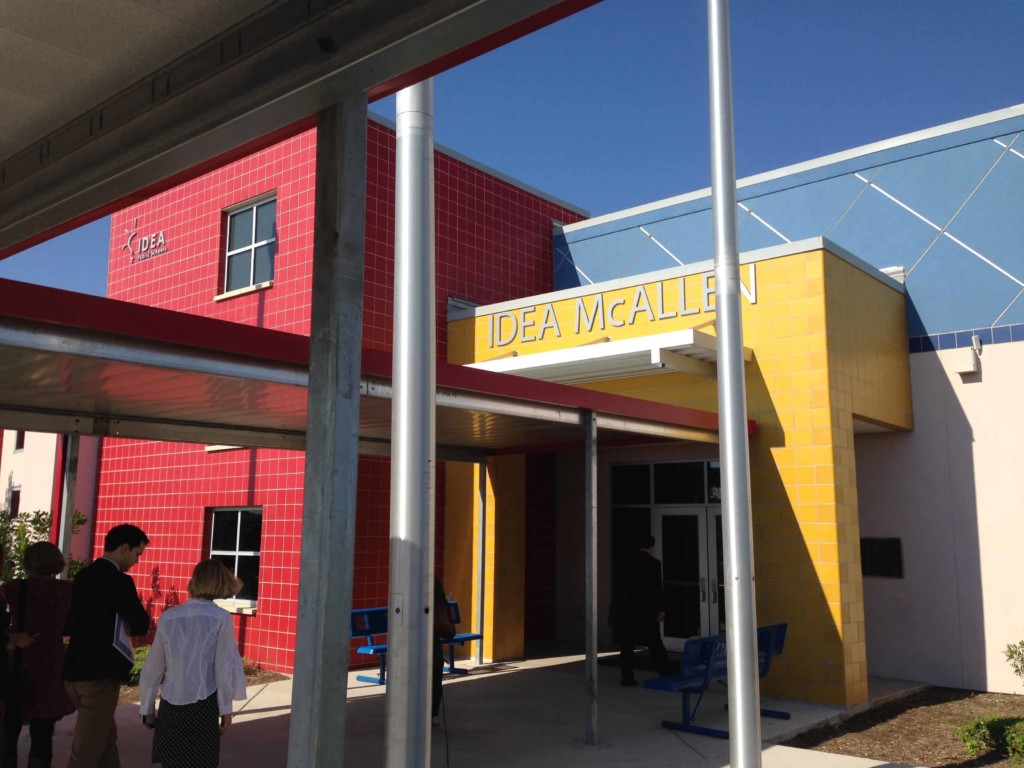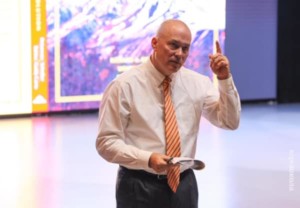Changing Futures: IDEA Public Schools Achieve Quality at Scale in Texas

Because they target low-income Texas communities, it is remarkable that all IDEA graduates go to college–and most leave with a degree.
As fourth grade teachers, JoAnn Gama and Tom Torkelson founded an after school program in Donna Texas in 1998. They received a charter in 2000 and launched with grades 4-8.
The network of K-12 campuses feature K-5 Academies (now adding preschool) and 6-12 College Prep schools. The flagship high school engages all scholars in the rigorous International Baccalaureate diploma program. Newer high schools offer Advanced Placement courses. As fetured on the national #ThinkItUp special, the National Math Science Initiative supports AP teacher training at IDEA.
For five years, IDEA has been rotating elementary students through a computer lab to individualize math and reading instruction. In math, students use adaptive DreamBox and Reasoning Mind.
In reading, the primary Direct Instruction core is supplemented by leveled reading with Accelerated Reader. They are testing i-Ready from Curriculum Associates in three schools.
Catalyst is a secondary effort to close gaps and provide enrichment. Students are grouped for the one hour block using state test results and Renaissance Star. The lowest group (more than two years behind) receive small group instruction and have access to after school support from Sylvan tutors using adaptive reading software on iPads with groups of three students. The middle groups boost literacy with Achieve3000.
Secret sauce. IDEA will open a fourth region next year and will operate 60 schools by 2017. They will do it maintaining their “college for all” goal and culture.
The IDEA secret sauce is equal parts expectations and execution. Banners in every school make explicit what you see in every classroom: closing the achievement gap, whatever it takes, team and family, sweating the small stuff, no excuses, and 100% every day.
What I most appreciate about IDEA is that despite their success, they are always seeking ways to get better. They host an annual consultancy of national experts who, in a series of rapid fire sessions, explore burning questions and big opportunities. They actively explore opportunity in both improvement and innovation.
The IDEA team reports typical blended learning challenges–combining formative assessment from different sources, monitoring student progress and evaluating all systems for effectiveness.
Individualization isn’t all about EdTech. At IDEA, it starts with a handshake and a greeting from every college prep teacher every day.
For more on Texas, check out:
- Houston, Texas | A Growing Center for DIY Innovation
- DLN Report Card: Expanding Online Course Access in Texas
DreamBox Learning and Curriculum Associates are Getting Smart Advocacy Partners.
Stay in-the-know with all things EdTech and innovations in learning by signing up to receive the weekly Smart Update.








0 Comments
Leave a Comment
Your email address will not be published. All fields are required.